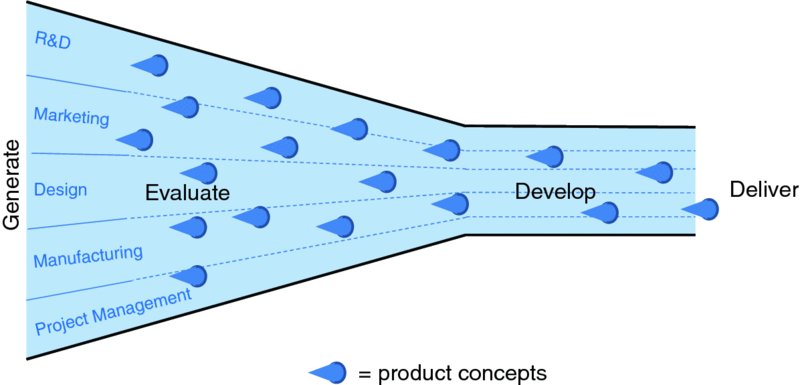INTRODUCTION THE JOURNEY INTO OPEN INNOVATION
The idea of cultivating firm innovation has long been associated with secrecy, fear of competition, and a general distrust of any entity outside the corporate walls. In this view (shown in Figure 1), product concepts are developed across various organizational functions, but it is a “hard-walled” process in which input from outside the firm is not sought or valued, and concepts are jealously guarded from leaks to the outside world.

Figure 1: A Typical Closed Approach to Innovation
The term “Open Innovation” is generally credited to Henry Chesbrough from his 2005 book and prior writings1, though its origins and concepts certainly appear in earlier thinking. Chesbrough's definition highlights the breaking down of traditional walls and veils of secrecy surrounding the organizational innovation process. As he describes it formally, “[Open Innovation is] . . . the use of purposive inflows and outflows of knowledge to accelerate internal innovation and expand the markets for the external use of innovation, respectively.” In somewhat simpler terms, this is “punching holes in the funnel” that historically depicts the innovation process, allowing good ideas, technologies, materials, and other knowledge to flow in, and viable ideas, concepts, and technologies that aren't going to be commercialized by the firm to be passed out through
Get Open Innovation: New Product Development Essentials from the PDMA now with the O’Reilly learning platform.
O’Reilly members experience books, live events, courses curated by job role, and more from O’Reilly and nearly 200 top publishers.

